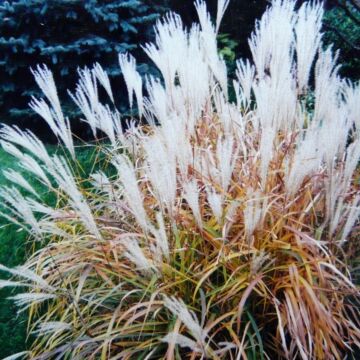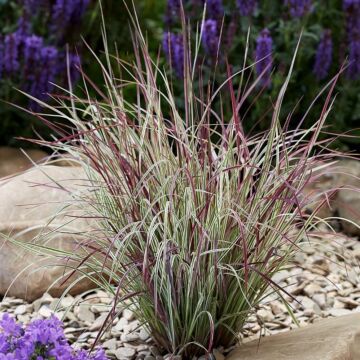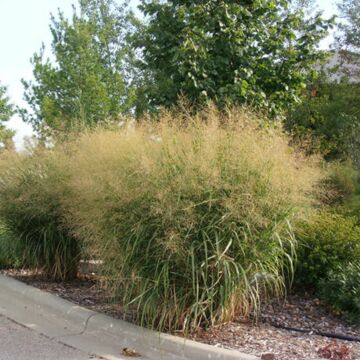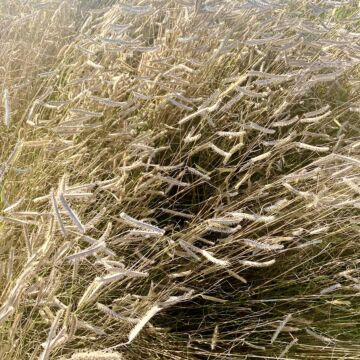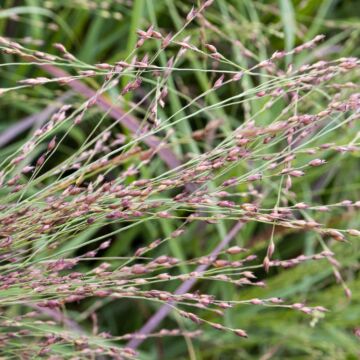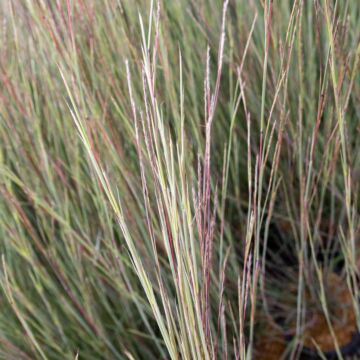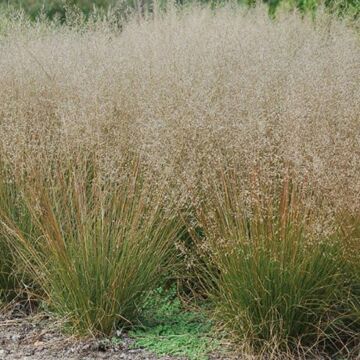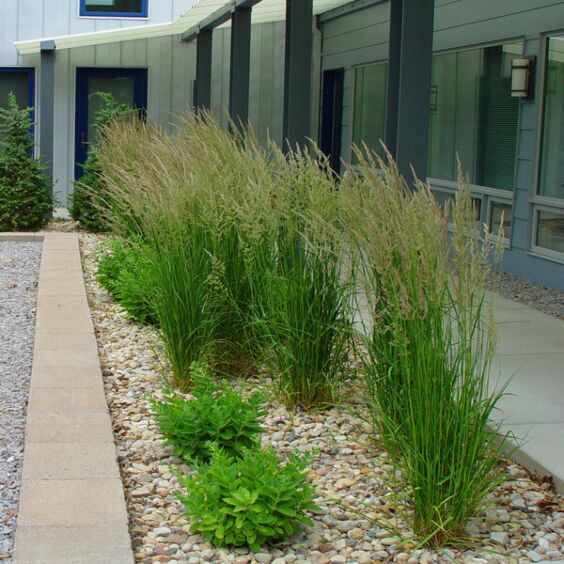
Growing zones
See Zone Map >Status: In stock
This grass is one of the first grasses to come out of dormancy and is one of the earliest bloomers. The bloom of this feather reed grass usually starts around June to early July, and the seed heads resemble wheat and are straw-colored soon after emerging. Its red-bronze flower spikes will enrich your garden for years to come. It performs best if planted in full sun with rich, well-drained soil.
This low-maintenance ornamental grass works well in mass or specimen plantings. Cut back late in winter or early spring before new growth begins. This grass is a very dependable "soldier" in borders. Karl Foerster is a wholesale and retail customer favorite! 2001 Perennial Plant of the Year!
- Sun
Mature Plant Size (H x W): 4-5' x 3-4'
Bloom Season: Summer
- Attracts Birds
- Deer Resistant
- Drought Tolerant
- Salt Tolerant
- Winter Interest
- Low Maintenance
- Long Blooming
- Award Winning
- Stone Mulch
- Cut Flower
Planting & Care for Karl Foerster Feather Reed Grass
Preparation
- Karl Foerster Feather Reed Grass is a cool season, clump-forming grass. Cool season grasses look great even during cooler weather and can tolerate low light and temperatures and even frost.
- It has an upright, narrow, and extremely uniform clump up to 3' or even 5' tall when flowering.
- Karl Foerster Feather Reed Grass is one of the first grasses to come out of dormancy and one of the earliest to bloom.
- Though Karl Foerster Feather Reed Grass can tolerate wet soil, like those around a pond, this grass will thrive more in full sun in a rich, well-drained soil.
- This ornamental grass can be used in mass or as a specimen in the landscape.
- This is a very dependable "soldier" in the border.
- Hardiness zone 4-9.
Opening Plant Material
- Container - Completely saturate all container plants by putting in a larger container of water until stops bubbling, then remove the plant from the container.
Planting Container
- Dig a hole no deeper than the depth of the container and 6" or more wider on the sides.
- Slide the Karl Foerster Feather Reed Grass from the pot by tapping on the bottom of the pot.
- With a shovel or knife, trim the bottom 2" off the root ball for plants with a shovel or knife in plastic containers.
- Rotate the feather reed grass to the proper position. Never lift or move plants by the tops.
- Place the root ball in the hole.
- Adjust the plant height so the root crown is slightly higher than the ground.
- Place fertilizer packets into the bottom of the hole (if purchased). *Use our recommended fertilizer.
- Back-fill the hole with soil, making sure the top of the root ball is visible and slightly higher than the soil around it.
- Firm the soil around the plant. Water well to settle soil around the root ball.
- Water frequently when newly planted.
Pruning - After Planting
- Container - Although it is not essential for container plants to be pruned after planting, a light pruning to remove any broken branches during shipment and improve shape will help the looks of your new planting.
Pruning - Through-out the Season
- Ensure you cut feather reed grass to the ground in late winter or very early spring, before new growth begins.
- See our instructional video on pruning ornamental grasses in the landscape in our Plant & Handling Guide section here.
Watering - After Planting
- Plants typically take approximately 6 weeks to establish new roots in your soil. During this period, water plants as oft en as every 2-4 days at the start and at least a minimum of once per week.
- Beyond the 6 week establishment period, water once per week, unless rains occur.
Watering - Through-out the Season
- After the first season, plants should only be watered during extended periods without rain.
- How do you know if your plants need water? The easiest way to tell is to touch the soil around the roots. If it is moist, there is no need to water. If it is dry, give it a good soaking with the hose end (no nozzle) watering the soil only, not the leaves.
Frequently Asked Questions
What is the best growing zone for Karl Foerster feather reed grass?
How far apart should I plant Karl Foerster feather reed grass?
What are the landscaping uses of Karl Foerster feather reed grass?
What are common issues in feather reed grasses?
Why is my Karl Foerster feather reed grass not growing properly?
Planting & Handling Help
Download our Planting and Handling Guide below to plan for a successful arrival and install of your plants. Be sure to water all plants as soon as they arrive and every day until you’re ready to plant. Keep any bare root bundles in a shady, cool spot with the roots covered at all times.


Learn More
Watch our videos on handling bare root plants, how your order is prepared for shipment and more.


Plant Sizing
What is the difference between Containers, Grow Bags, Bare Root, and Balled & Burlap (B&B)?
Shipping Times


Our FedEx and local shipping times depend on two factors, one is by the region and the second is the type of product being shipped. For example, small fruits are only shipped in spring, but majority of our perennials are shipped from spring until fall. Keep in mind the dates below act as a general guide. Due to unpredictable weather, staffing, inventory and industry demands these timelines can change. Therefore, we cannot guarantee any of these times.
Shipping Dates by Region*
Northern Cold Region: April 22nd - November 7th
Northern Region: April 15th - November 7th
Middle Region: April 1st - November 7th
Southern Region: March 15th - November 7th
Local Delivery (small radius from Waterloo, WI): April 22nd - November 7th
Shipping Dates by Season*
Spring Shipping: Region Start Date (above) - May
Fall Shipping: September - November
Due to unpredictable weather, these times may vary. Some varieties are exceptions due to heat and plant health reasons. Enter your shipping zip code at the top of this page and be sure to check the shipping information on each product before you add it to your cart. If the product is too large or restricted in your state, you will not be able to checkout with that item in your cart.

